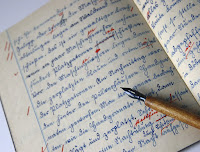Happy Ayyám-i-Há!

(This was originally posted on my Facebook page by the lovely and very gracious Erica Toussaint, who is a member of the National Spiritual Assembly of the United States. Some of this I knew. And the most significant facts about Ayyám-i-Há (otherwise known as Intercalary, or between the calendar days), mainly, the mystical meaning of the term and how significant it is, I did NOT know. I am deeply appreciative to Karla Jamir for writing this article, and to Erica Toussaint for posting it so that more people understand the Divine Origin of Ayyám-i-Há.
Here in Northern California, we tend to celebrate the days of Ha' as a time for making gifts (I'm very much challenged in the crafts department, so I don't do that), giving and receiving of gifts (I do buy some for the children), and partying. My community hosts the area's big Ayyám-i-Há party at the local park and recreation center, and lots of people come to eat, play games, talk, laugh, listen and dance to music. Yours truly is revising her role as "Madame Angel,"sikick". It's a total parody of those cheesy Psychic Network ads that used to run on T.V. years ago. It's a lot of fun, and I end up cracking up with my "customers" (Baha'is buy tickets for a "reading", and the proceeds go to the Fund) most of the time. This year, I hope to finally get my hands on a crystal ball so I can do Bullwinkle's "Genie, genie, chili beanie, the spirits are about to speak!" speech. It's all for fun, folks. That's what it's all about--having a good time with the people that I know and love, both Baha'is and non-Baha'is.
**********************************
Ayyám-i-Há: Days Outside of Time
**********************************
By Karla Jamir
The Ayyám-i-Há holiday begins each year on the evening of February 25 and ends at sunset on March 1st. Of this period Bahá’u’lláh writes: “It behoveth the people of Bahá, throughout these days, to provide good cheer for themselves, their kindred and, beyond them, the poor and needy, and with joy and exultation to hail and glorify their Lord, to sing His praise and magnify His Name.”
A closer look at the history and background of Ayyám-i-Há can help us to value it even more for its unique spirit, resist any temptation to turn it into a “Christmas equivalent,” and discover some of its beautiful and mystical symbolic meanings.
The Baha’i calendar of 19 months of 19 days needs 4 days (5 in leap years) to equal a solar year. By definition such added days are “intercalary” days. In revealing this “Badí’” calendar, the Báb did not say exactly where to place the extra days. Some of the early Bábís included them as part of the Fast, others stopped fasting 4 or 5 days before Naw-Rúz (the new calendar year). Bahá’u’lláh named these days in the Kitáb-i-Aqdas and specified their place in the year:
“Let the days in excess of the months be placed before the month of fasting. We have ordained that these, amid all nights and days, shall be the manifestations of the letter “Há”, and thus they have not been bounded by the limits of the year and its months...and when they end—these days of giving that precede the season of restraint—let them enter upon the Fast. Thus hath it been ordained by Him Who is the Lord of all mankind.”
As in His prayer for Ayyám-i-Há, Bahá’u’lláh juxtaposes these “days of giving” with the Fast’s “season of restraint.” Ayyám-i-Há is intended partly as spiritual preparation for the Fast, a reminder of its approach, and a way of fostering the detachment from material things so necessary for the Fast.
Ayyám-i-Há means the “Days of “Há”.” “Há” is the Arabic letter corresponding to the English “H”, and one of the three Arabic letters which make up the word “Bahá.” Both Bahá’u’lláh and the Báb followed the Arabic tradition of assigning numerical values to letters, and of giving spiritual meanings to both. The numerical value of “Há” is 5, the sum of the numerical values of the letters in the “Báb,” and the maximum number of intercalary days.
“Há” is also the first letter of an Arabic pronoun commonly used in Arabic religious writings to refer to God, or “the Divine Essence.” “Há” by itself is used as a symbol of “the Essence of God,” and was the subject of many an Arabic essay on its mysteries. In Bahá’u’lláh’s Tablet of All Food the realm “beyond which there is no passing,” or the realm of the Divine Essence is designated as “Háhút.” In the Báb’s interpretation of the letter “Há” (quoted by Bahá’u’lláh in the Kitáb-i-Iqán), the Báb speaks of martyrdom in the path of God and warns “even if all the kings of the earth were to be leagued together they would be powerless to take from me a single letter...”
Bahá’u’lláh has designated the intercalary days “amid all the nights and days” as “manifestations of the letter ‘Ha’ ”—that is, as Days of the Divine Essence. These extra days stand apart from the ordinary cycle of weeks and months and the human measure of time. They are not “bounded by the limits of the year and its months”—just as the infinite reality of the divine Essence of God is unbounded and cannot be captured or comprehended within the cycle of time or any other human measurement.
Thus Ayyám-i-Há can be thought of as days outside of time, days that symbolize eternity, infinity, and the mystery and unknowable Essence of God Himself. Contemplation during these days of the timeless mystery of the Essence of God provides us the “joy and exultation” with which to “sing His praise and magnify His Name.”

Comments